When sitting is a pain
Working at a desk all day can be hard on your back. Sitting puts more pressure on your back than any other position, according to the College of Family Physicians of Canada. To help ease some of that tension, the CFPC recommends making adjustments to the way you sit, such as keeping our knees in line with your hips and turning with your whole body rather than at the waist. While adjustments might not protect back pain entirely, they might help relieve some pressure on your back.
Careful stretching is another way to ease back tension during a long day of sitting. Esther Gokhale, the California-based author of 8 Steps to a Pain-Free Back, has developed a method for stretching while seated that she calls “stretchsitting.” [The method] immediately decompresses your discs, preventing them from damage and allowing them to heal, allows you to sit for extended periods without squirming,” she says.
Click through for her step-by-step technique. Remember to check with your doctor before trying this or any new physical activity.
When sitting is a pain
Working at a desk all day can be hard on your back. Sitting puts more pressure on your back than any other position, according to the College of Family Physicians of Canada. To help ease some of that tension, the CFPC recommends making adjustments to the way you sit, such as keeping our knees in line with your hips and turning with your whole body rather than at the waist. While adjustments might not protect back pain entirely, they might help relieve some pressure on your back.
Careful stretching is another way to ease back tension during a long day of sitting. Esther Gokhale, the California-based author of 8 Steps to a Pain-Free Back, has developed a method for stretching while seated that she calls “stretchsitting.” [The method] immediately decompresses your discs, preventing them from damage and allowing them to heal, allows you to sit for extended periods without squirming,” she says.
Click through for her step-by-step technique. Remember to check with your doctor before trying this or any new physical activity.
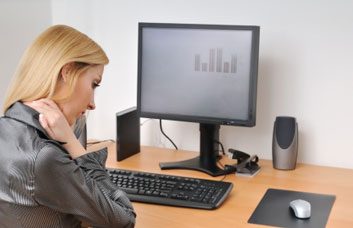
When sitting is a pain
Working at a desk all day can be hard on your back. Sitting puts more pressure on your back than any other position, according to the College of Family Physicians of Canada. To help ease some of that tension, the CFPC recommends making adjustments to the way you sit, such as keeping our knees in line with your hips and turning with your whole body rather than at the waist. While adjustments might not protect back pain entirely, they might help relieve some pressure on your back.
Careful stretching is another way to ease back tension during a long day of sitting. Esther Gokhale, the California-based author of 8 Steps to a Pain-Free Back, has developed a method for stretching while seated that she calls “stretchsitting.” [The method] immediately decompresses your discs, preventing them from damage and allowing them to heal, allows you to sit for extended periods without squirming,” she says.
Click through for her step-by-step technique. Remember to check with your doctor before trying this or any new physical activity.
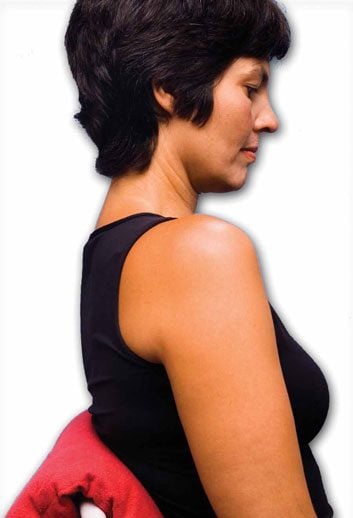
Step 1
Before you begin, attach a cushion to your chair so that it hits you at mid-back, below the shoulder blades.
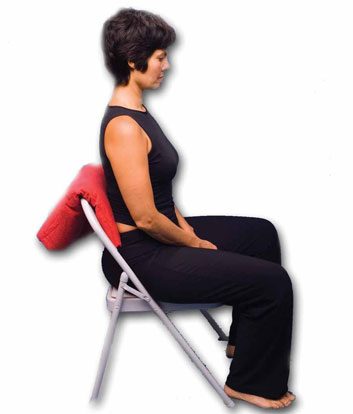
Step 2
Sit with your bottom all the way back in the chair.
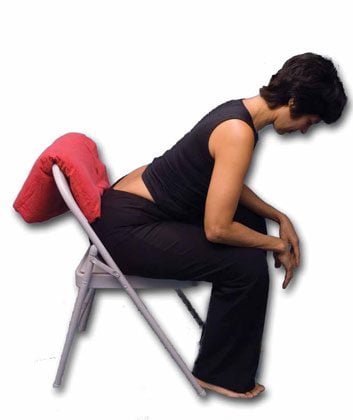
Step 3
Lean forward from the hips and tilt your ribcage forward, as if you are doing a mini-crunch.
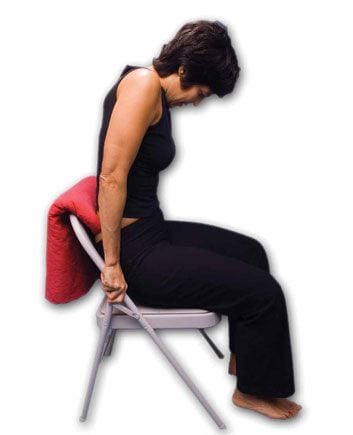
Step 4
Hold the armrests or side bars on your chair and, while still tilted forward, press against them to get a gentle stretch in your lower back.
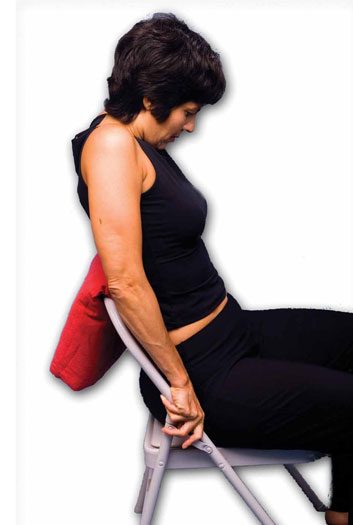
Step 5
Keeping the stretch, lean back from your hips and press your mid-back on to the cushion.
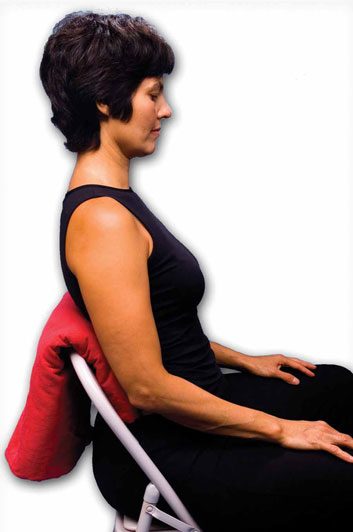
Step 6
Come out of the mini-crunch and relax completely, letting the cushion keep you in mild traction.
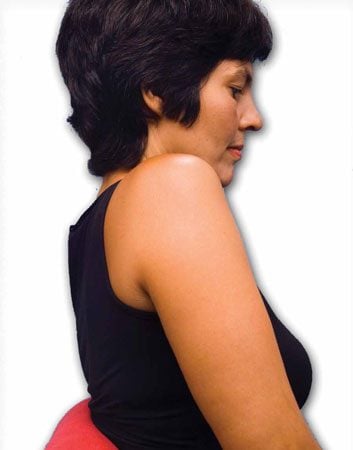
Step 7
Roll each shoulder back and rest your hands close in to your body.
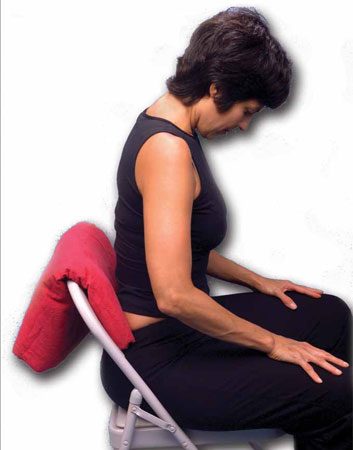
Step 8
Angle your chin down slightly, letting the back of your neck be long.
Related:
• 3 moves to strengthen your back
• 5 reasons to try yoga this year
• How to ease muscle pain after exercise
